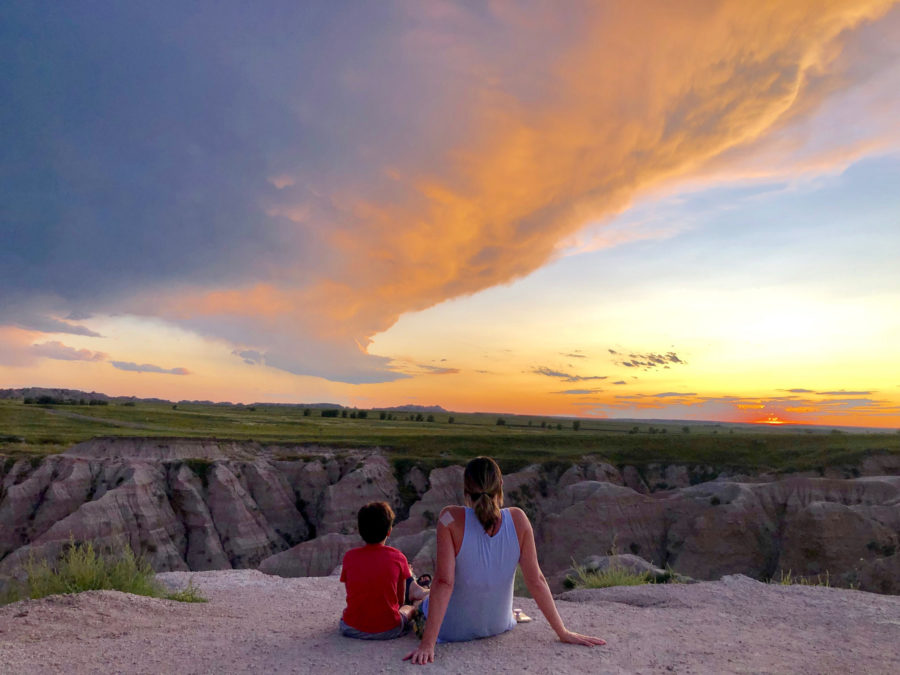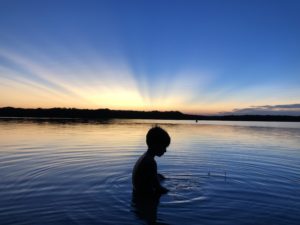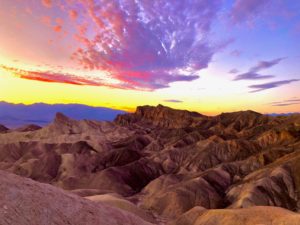In early 2019, Kristy Bickmeyer was at a Fleetwood Mac concert listening to this lyric when she realized she was ready to make a life-changing decision. Bickmeyer and her husband had been considering hitting the road in an RV with their two children, 8 and 6, for a yearlong road trip after visiting with friends who had done the same thing. While her husband was all in, Bickmeyer was on the fence. But once she heard Stevie Nicks sing those words, she realized time was running by, and she wanted to spend that quality time with her family.
Bickmeyer’s family is one of many who decide to either take long-term road trips or even go full-time RV living. According to the RV Industry Association, more than a million Americans now live full-time in RVs. Once dominated by retired individuals, younger people and families are choosing to hit the road especially since the COVID pandemic. With air travel options limited, families chose to travel in a vehicle that allowed them to control their menus, sanitation and level of physical contact with other.
According to RVShare, more families are choosing RV travel and longer stays because of the unique family experience, the ability to spend quality time traveling and exploring the outdoors while still having the conveniences of the RV. More workplace and schooling flexibility has also convinced many families to hit the open road while still being connected to work or school.
CONSIDERING FINANCES
Once you decide to take that long-term trip, what should you consider in terms of finances? Bickmeyer said they had to consider their major expenses. Obviously, their home mortgage was first. If you own a home and are not planning to sell or downsize, consider renting your home, which is what the Bickmeyers chose to do.
“I put our house on Zillow and had two calls come in almost immediately,” Bickmeyer said. “After they came and toured the home, they signed the lease within days. We actually ended up making a profit from renting the house since the rental fee was more than our mortgage. The rental market is actually so hot right now that this would be fairly easy for most families.”
PREPARING FOR A NEW COST OF LIVING
After their mortgage they considered their cost of living with some major expenses being erased like their children’s private school tuition and activities like sports and dance. They sold Bickmeyer’s car which saved on a car payment, insurance and gas for the car. However, they also had to consider their sources of income. Kristy, owner of Twinkle Toes Nanny Agency, could work from anywhere, but her husband could not. They had to do their homework to see how the loss of some expenses and added income from selling both the car and another rental property could make up for that loss of income. They figured out how they could make it work, and her husband took a leave of absence from his job.
But Bickmeyer said they also needed to consider their new expenses which included an RV payment, fuel (which can be considerable), campsite fees, entertainment and any costs of homeschooling. Most people who plan to work from home should also consider purchasing a hotspot for their phone to guarantee wifi connection. Bickmeyer estimated that the trip cost about $1,000 a month. She emphasized that it wasn’t about saving money but about their experiences.
While the Bickmeyers chose to purchase an RV and tow vehicle, there are other options that may be more affordable including commercial RV rentals or sites like RVshare, which is like an AirBNB for RVs. People post RVs for rent with different rates depending on size and amenities.
MAPPING OUT THE TRIP
Once you’ve selected your RV, the best way to plan for your expenses is to plan your trip and what you want to do. Once you know the route and destination of your trip, you can research where you want to stay and costs of campsites and any entertainment or attractions you want to visit. Bickmeyer advises making reservations at popular national or state parks well in advance. It will likely take you up to six months to settle everything needed to get ready to travel which includes renting your house, putting any items in storage, and planning and packing your trip. For some families, circumstances may mean this process may take shorter or longer.
The cost of campsites can vary wildly. KOA and Yogi Bear, two popular family campsites, come with more amenities but at a higher cost. National and state parks typically have low daily fees with less amenities. The “America the Beautiful” pass costs a small annual fee which then allows for free admission to every national park for the year. Many states also offer state park passes which help with savings.
If you want to splurge a few times on a premium resort style campsite which feature cabins, pools and other amenities, a Passport America membership that costs $44 annually can give you deep discounts at campgrounds across North America.
ESTIMATING FOR TRAVEL EXPENSES
Fuel is usually one of the biggest expenses of the trip. Travelling slowly helps on fuel costs, and programs like RV Trip Wizard can help you plan your best route to help you “save time, plan safe RV routes and find great campgrounds.” Use the app GasBuddy to find the best prices or join gas station loyalty clubs.
Families can also use RV Trip Wizard to help identify attractions for entertainment and how to reserve experiences. It may be beneficial to invest in different amusement park, museum, zoo or garden memberships that may allow for discounted entries in multiple locations.
Once you decide to hit the road, you can see there are a variety of affordable options for your journey. Despite the cost, Bickmeyer says it was a once-in-a-lifetime experience.
“I would do it all again in a heartbeat. It was the perfect time for us to take this trip as my kids were the perfect ages. They had a wonderful time, and they remember those experiences. It was the journey of a lifetime,” Bickmeyer said.
THE ROAD MAP TO RV SUCCESS:
- Evaluate your current and potential finances. Consider costs you will be rid of as well as new travel costs.
- Pick an RV best suited for your travel needs. Large family or traveling alone?
- Map out campsites and attractions. What do you want to go see and where/how often will you be resting?
- Prepare for your new expenses and hit the road! Save money for fuel, national parks and campsites.
RELATED ARTICLES:
Hold it Right There! A Guide to Isometric Exercises
Where Can I Get the Best Bang for My Buck in Gym Costs?
Spice Up Your Diet With Exotic Foods




